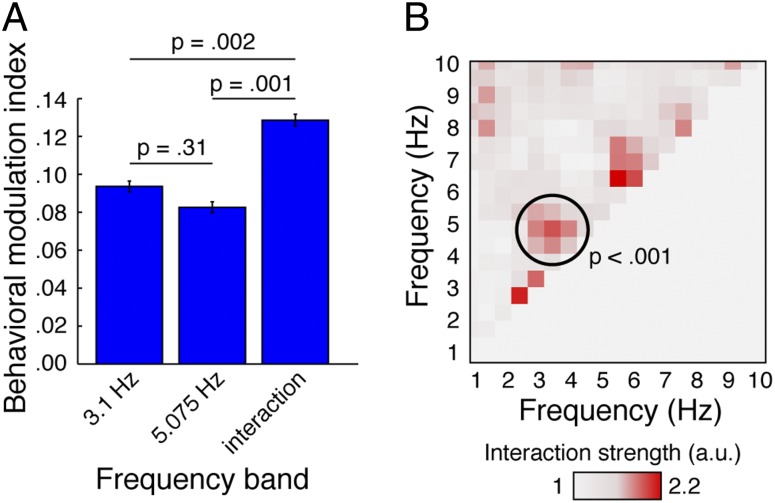Fig. 5.
Behavioral comodulation was interactive and frequency-specific. (A) The behavioral modulation index was significantly larger for the combination of the 3.1-Hz and 5.075-Hz frequency bands than for either frequency band alone. Error bars indicate SEM. (B) Interaction strength (shown here normalized with respect to SD across participants) showed a peak at the combination of 3.1-Hz and 5.075-Hz frequency bands that was specific to the frequencies entrained by the stimulation.

